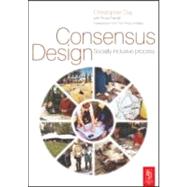
| Introduction | |
| Architecture as a social art | |
| Consensus Design: Why? | |
| Consensus Design: How? | |
| Process development: two projects | |
| From experimental method to built project: Goethean Science Centre, Scotland | |
| Socially shaped process: Eco-village, Sweden | |
| Making it work | |
| Projects | |
| Reversing moods: Lunatic Asylum to Steiner School, England | |
| Three tasks in one: East Bay Waldorf School, California | |
| Working with a developer: Mixed-use urban development, California | |
| Multiple viewpoints: Multi-faith centre, England | |
| Desert ranch: Single-family house, Arizona | |
| Project revisiting: Goethean Science Centre, Scotland | |
| Broader Implications | |
| Useful Practicalities | |
| Table of Contents provided by Publisher. All Rights Reserved. |
The New copy of this book will include any supplemental materials advertised. Please check the title of the book to determine if it should include any access cards, study guides, lab manuals, CDs, etc.
The Used, Rental and eBook copies of this book are not guaranteed to include any supplemental materials. Typically, only the book itself is included. This is true even if the title states it includes any access cards, study guides, lab manuals, CDs, etc.